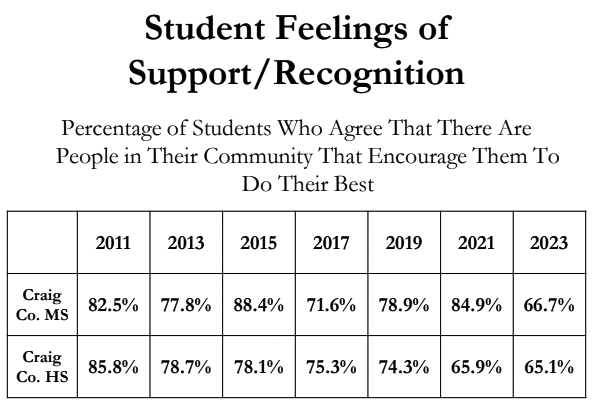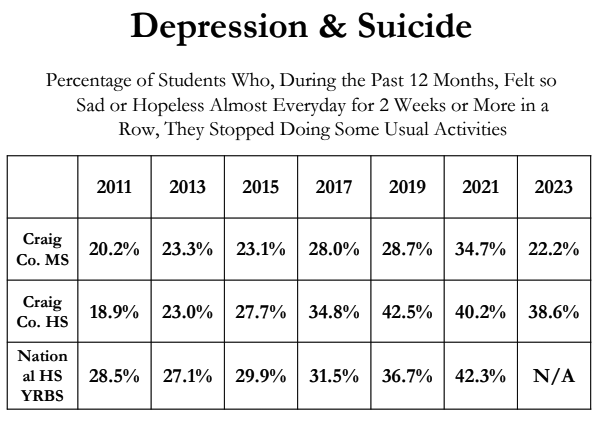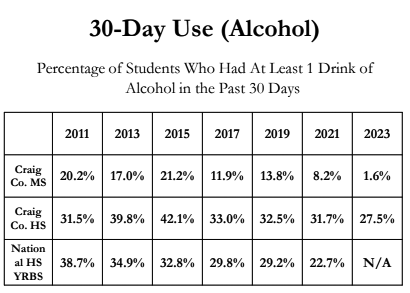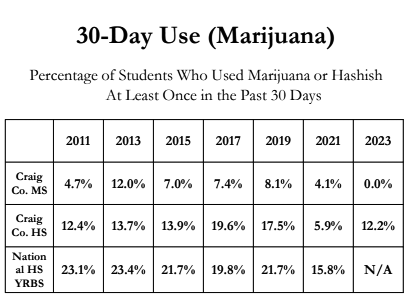



 The Blue Ridge Behavioral Healthcare has supported Craig County Public Schools for several years in conducting surveys which help the community as well as the school to know what the students are experiencing, and helps to guide avenues to assist them in their underlying needs. Courtesy images.
The Blue Ridge Behavioral Healthcare has supported Craig County Public Schools for several years in conducting surveys which help the community as well as the school to know what the students are experiencing, and helps to guide avenues to assist them in their underlying needs. Courtesy images.
Pam Dudding
Contributing writer
For many people, there have been incidents of children they know that has brought tears to their eyes or caused them to kneel in sincere prayer, hoping for the best outcome.
Students of any county experience different difficulties, challenges and have strengths to win or some find themselves in weaknesses that defeat them at that moment.
Since 2005, Craig County Public Schools has participated in surveys which help to reveal truths about the students in CCPS which then assists the school in being proactive to their student’s needs.
The Craig County Youth Risk Behavior Survey is conducted by Craig County Rural Health Care Corp (CCRHCC).
The November report included the results of questions asked about, Core Measures – alcohol, tobacco, marijuana, vaping, Rx and heroin), other drugs, mental health, sexual behaviors and other topics such as homelessness, social behaviors, etc.
Some core measure examples:
- During the past 30 days, on how many days did you smoke a cigarette?
- How much do you think people risk harming themselves (physically or in other ways
- If they use marijuana once or twice a week?
- How do your parents or friends feel it would be for you to have one or two drinks of an alcoholic beverage nearly every day?
Many areas of questions include:
- Depression & Suicide (feelings of depression, thoughts of suicide and attempts of suicide)
- Student Feelings of Support/Recognition from friends, community, and family
- Sleep habits
- Cigarette, tobacco and vape use
- Alcohol use
- Marijuana use
- Other drug use
Blue Ridge Behavioral Healthcare has recommendations to assist schools and their communities to help students; initiate a student recognition program at schools and in the community (community collaboration), provide suicide awareness education for students, provide mental health education to all faculty and staff and schedule prevention programs as they have an impact.
They also suggest continuing to grow programming in health classes that educates youth on wellness beyond traditional health topics (e.g. impact of sleep), continue support of grant applications with community partners to bring programs to Craig County and continue to support administration of the VRBS every two years.
The main objection they shared it to “keep the focus on the fact that this is community data and therefore needs a community response.”
They ask that everyone please remember that too often, data like this is looked at by communities as a school challenge.
“In every community, and Craig is no exception, the reality is that youth struggling with their mental health requires community action far beyond the walls of any school,” Carlin said.
“These surveys are to be used to guide students, schools, families, citizens, and communities as a whole to better serve the youth of Craig County and do our best to help give them what the numbers tell us they are needing most at that time,” they added.
It is suggested that these are numbers that Craig County can use to inform planning, action, and ultimately create positive change based on the trends being seen.



